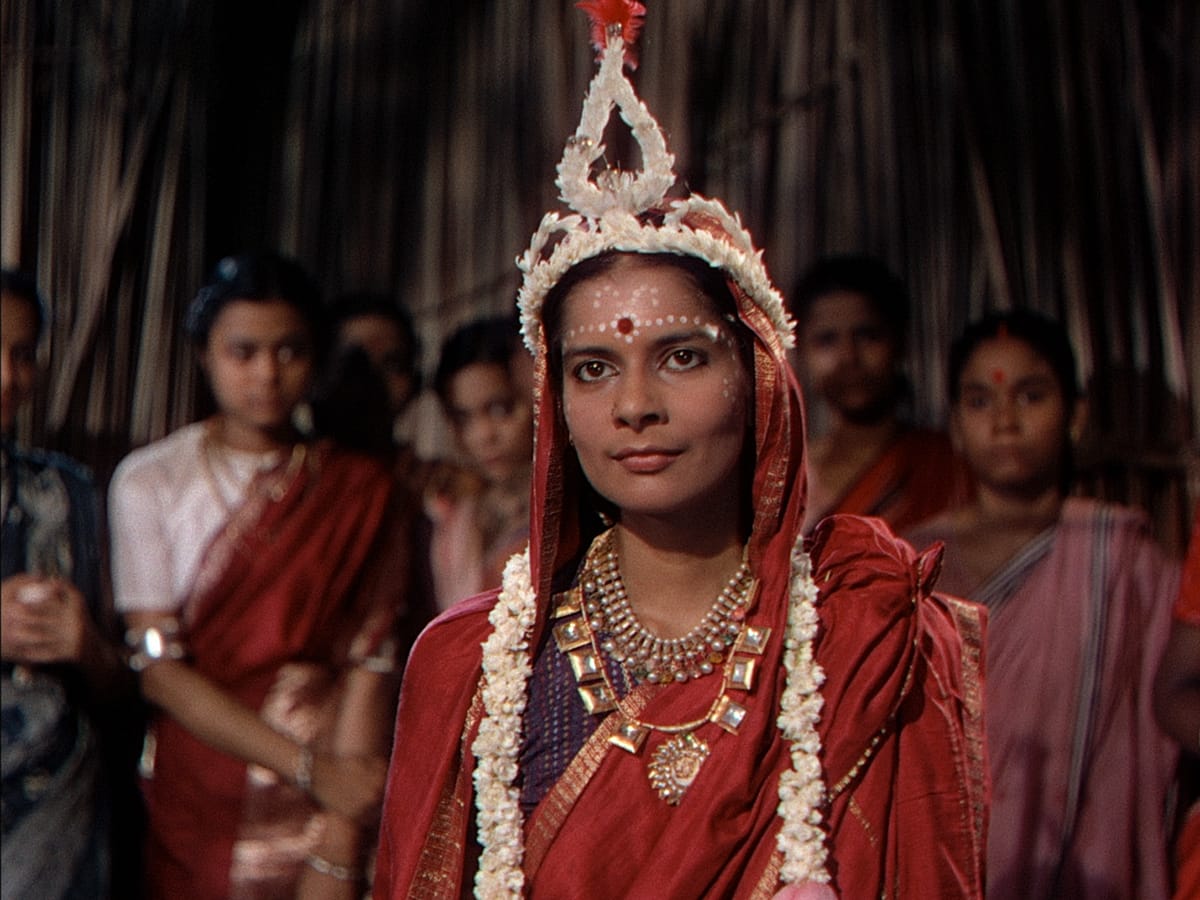The River

Jean Renoir’s hopes for a Hollywood production of The River had languished for two years when, in November 1948, a meeting with a Beverly Hills florist sent him on a reconnaissance trip to Calcutta. This inspired an unexpected independent film of great visual beauty and unconventional structure which introduced western audiences to Indian culture and music and launched Renoir on a new international phase of his career.
Renoir called Calcutta “the Bronx of India”—overpopulated, dirty, rather ugly, but fascinating. He was delighted to be “confronted every day with boatmen working their oars in the Ganges who are directly stepping out of an Egyptian bas-relief.” He met a young journalist named Satyajit Ray who helped him encounter Indian culture but was disappointed that a Renoir film shot there would have only one Indian character in it.
Perhaps this prompted the invention of several new Indian characters when Renoir and Rumer Godden wrote a script for the film that summer, thus beginning the transformation of her autobiographical novel of adolescence into an Occidental meditation on the Orient, a process accelerated by Renoir’s failure to find an American male star able to spend five months in India. For, without the stabilizing, conservative presence of a star, The River became an experimental film. Multinational, with a cast made mostly of children and amateurs, it was the first color film for both Jean and Claude Renoir, the first Technicolor film shot in India, one of the first films anywhere to record its sound on magnetic tape. Distance freed them from the supervision of a Technicolor consultant; black-and-white rushes took ten days to return from London. So, with little chance to see their work, Renoir’s crew had only their own eyes and sense of color to guide them. A cable from London confirmed that sense: “Technicolor chiefs consider photography of The River the best they have ever had.” Later Eric Rohmer would write of “the most beautiful color we have ever seen on the screen.”
All this in a project burdened by a novice producer who initially failed to provide generators sufficient to produce enough light for the three-strip Technicolor camera, a usable crane, or even a steel tripod on which the ponderous blimped camera could pan, and whose actions often undermined Renoir’s work. So it was with relief that Renoir could at least write, “All together, actors, crew members and myself, we arrive at the end of the shooting in spite of the amazing ignorance of an amateur producer.”
Renoir had utilized a delay forced by lack of equipment to indulge has fascination with India by shooting silent documentary footage of life along the river. Over the protests of the producer he cast the young dancer, Radha, as Melanie, making possible Harriet’s Krishna story, where Radha’s wedding dance became, for many, the most memorable moment of the film. When the shooting ended he used his tape recorder to register some of the Indian music he had come to love. As India pervaded Renoir’s mind, it began to pervade the film.
The combination of children, amateur actors and insufficient equipment imposed on The River a style very different from that of other Renoir films, with very short shots and almost no camera movement in any scene requiring direct sound. The shorter the shot, the more likely a child or an amateur would get it right—and the less damage if they didn’t.
Back in Hollywood in June 1950, Renoir discovered that the awkwardness of his actors made some footage unusable. Without the possibility of retakes, he began to construct his film in the editing room, first creating a version concentrating on the story of adolescent girls coming of age through their encounter with a romantic stranger. A preview audience liked the girls, loved the glimpses they were given of India, but had trouble understanding the story. Through subsequent versions Renoir reduced the elements of story and added more and more of his documentary footage, compensating for the loss of dramatic material by adding a commentary to help explain the action and make Captain John acceptable. “I had to rescue Tommy’s part. Now people seem much interested in Captain John. Before, they simply hated him and that was the ruin of the picture.” In the ultimate triumph of India over conventional filmmaking, Renoir decided not to have music written for the film, but to score The River with the Indian music he had recorded in Calcutta.
In the final version the transformation is complete; India has overwhelmed the story. Unintentionally, The River had become an early example of the dissolution of plot critics would hail ten years later in L’avventura. The narrator’s voice places the action in the past, filtered through memory, allowing a reflective complexity that merely showing the events could not achieve—reflecting not merely on adolescence but on India and the Indian attitude of consent to the world that had captivated Renoir and that gives the film a cyclical, timeless air. This introspective voice permits the interweaving of the life of Harriet and the life of India, so that the sights and sounds of India may dominate our experience of the film while Harriet remains its conscious center. It becomes, thus, a device which allows Renoir to remain true to the spirit of Rumer Godden’s novel while giving himself to his new love, India.




